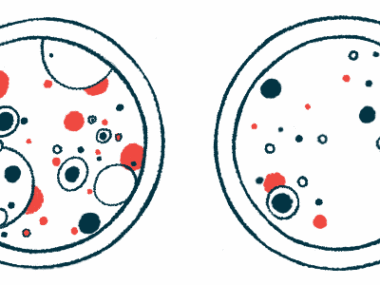Newborn Screening in U.S. Linked to Better Outcomes in CF Children
Improved lung function, nutrition seen in decade since NBS launch
Written by |

The advent of newborn screening (NBS) programs in the U.S. a decade ago is linked to better outcomes today in children with cystic fibrosis (CF), a new study reports.
Results show that children born after CF newborn screening became available in their states have improved nutritional outcomes, better lung function, and delayed emergence of Pseudomonas aeruginosa lung infections compared with children born before NBS was launched.
“Significant advances in CF care have improved outcomes for young children over the past 2 decades. … Earlier diagnosis through NBS has enabled earlier access to these interventions,” the researchers wrote.
The team suggested that universal newborn screening will have an even greater impact on children with CF in the next decade.
“In the future, as highly effective modulator therapies become available for infants with CF, NBS will allow for presymptomatic initiation of these disease-modifying therapies before irreversible organ damage,” the researchers wrote.
The study, “Real-world Associations of US Cystic Fibrosis Newborn Screening Programs With Nutritional and Pulmonary Outcomes,” was published in the journal JAMA Pediatrics.
Universal NBS in US since 2010
In many countries, including the U.S., Canada, Australia, and most of Europe, newborns are tested for a range of health conditions, including CF, before leaving the hospital. In the U.S., CF testing was gradually added to NBS programs in each state over several years, with inclusion in all 50 states by 2010.
Early testing for cystic fibrosis — like for most other diseases — is thought to enable sooner diagnoses and earlier access to treatments. While CF care and prognosis have improved substantially in recent years, the association of NBS adoption with clinical outcomes remains unclear.
In recognition of 10 years of universal CF newborn screening in the U.S., a research team launched a retrospective study to better understand the real-world effectiveness of NBS programs. The researchers sought to evaluate respiratory and nutritional outcomes associated with the emergence of NBS for CF.
The analysis was conducted using data included in the CF Foundation Patient Registry (CFFPR) from Jan. 1, 2000, to Dec. 31, 2018. Patients eligible for inclusion were born between those dates in the District of Columbia or any of the 44 U.S. states that began a statewide NBS program in 2004 or later. All of the children involved in the analysis were diagnosed with CF before age 10.
Altogether, 9,571 participants — 4,713 girls and 4,858 boys — were included in the study. A total of 4,510 were born before NBS was rolled out in their states and comprised the pre-NBS group, while 5,061 were born after the launch of newborn screening and made up the post-NBS group.
As expected, those in the post-NBS group were diagnosed with CF significantly earlier compared with the pre-NBS group. Specifically, post-NBS children were diagnosed at a median age of 0, or at birth, compared with 4 months of age in the pre-NBS group.
When limiting the analysis to children with a full 10 years of follow-up data, 71% of children in the pre-NBS group and 94% of children in the post-NBS group were diagnosed by age 1.
Median annual weight and height percentiles were higher in the post-NBS group than in the pre-NBS group. These differences persisted through age 10, but were diminished with age.
For example, the estimated mean difference in weight percentile between the post- and pre -NBS groups was 4.9 at age 2, then 3.4 at age 6; it dropped to 1.8 by age 10. Similarly, the mean difference in height was 5.6 at age 2, 3.7 at age 6, and 1.8 at age 10.
The forced expiratory volume in one second (FEV1) test — a measure of how much air can be forcibly exhaled in a single breath — was used to monitor lung function in children of at least age 6.
While FEV1 performance was similar between the groups at age 6, a difference emerged with age. Post-NBS children at age 10 showed a 2.6% higher FEV1, reflecting better lung function, than pre-NBS children.
Children born after NBS were more likely to have a first respiratory culture to test for lung bacteria before age 1 than were children born before screening was launched. Post-NBS children were also less likely to test positive for P. aeruginosa — a common infection-causing bacteria in CF patients — in their first culture. Specifically, 8.3% of post-NBS children tested positive for the bacteria compared with 20.2% of pre-NBS children.
Newborn screening improves CF outcomes
The findings overall highlight that newborn screening — through earlier diagnosis — can significantly improve outcomes in CF patients.
The researchers noted that follow-up in the study was limited to age 10, marking a study limitation.
“Longer follow-up may provide further insights into the association between NBS and FEV1 (especially as associations may increase with age), help determine if changes in nutritional status are sustained through adolescence, and enable evaluation of survival as an outcome,” the researchers wrote.
The emergence of highly effective CF therapies, like Vertex Pharmaceuticals’ Trikafta, has significantly improved treatment for CF patients in recent years. Evidence suggests that earlier initiation of such treatments can lead to better outcomes, which further highlights the importance of early screening, the researchers noted.
NBS also has implications for many other conditions, the team added.
“As these early interventions become a reality, more conditions will be added to state NBS panels; precision medicine and NBS are inextricably linked,” the team wrote.








